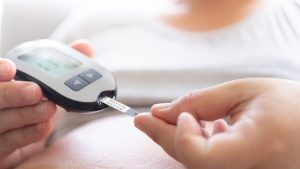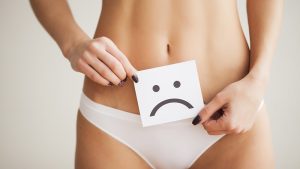Articles / Sex, libido and testosterone: how do you treat low libido and when is testosterone the answer?

Australia is the only country to have a licensed testosterone product for women, but prescribing it is still controversial. While testosterone is anecdotally credited with boosting mood and energy levels, it is currently only recommended for Hypoactive Sexual Desire Disorder (HSDD).
According to Dr Rosie King, a sexual health physician, HSDD is defined as a loss of spontaneous arousal, a loss of response arousal, and distress at those symptoms. She adds it’s not just about hormones – it’s complex, with physical and psychological aspect to be considered.
And it’s far more common than we think, with surveys of post-menopausal women showing that 68-80% say they have low sexual desire, she says.
Around 15% of those will be distressed by it and have “classis HSDD”, consultant endocrinologist, Professor Susan Davis AO adds, and they would be candidates for testosterone treatment.
But before starting there are various things to consider, as the case study of a 53-year-old “Diana” shows.
Diana, who has no significant health issues, presented at her GP surgery to talk about her lack of desire for her husband of 25 years, as it was starting to cause friction in their relationship. She had stopped taking conventional HRT a couple of years ago and now has no worrisome vasomotor or other menopause symptoms. She did, however, complain of fatigue and pain after sex.
Professor Davis says before commencing testosterone treatment it’s important to rule out any other possible causes of some of these symptoms. She suggests asking questions on diet and lifestyle and running a full set of bloods including iron, thyroid, eGFR, and fasting blood glucose to rule out any other causes. Establishing a baseline is important too. That involves measuring baseline testosterone and sex hormone binding globulin (SHBG) levels.
In Diana’s case she suggests reintroducing HRT. While it may not solve the low libido per se it could help with other factors that may be causing Diana’s lack of desire. Davis says she’d be “asking her about vaginal discomfort, vaginal dryness.

“I’d be asking her about bladder symptoms and urinary tract symptoms. And it’s quite common for women of this age to have some degree of urinary incontinence. And a lot of women are terrified of actually engaging in sexual activity in case they’re actually incontinent at the time of the sexual activity,” Professor Davis says.
She adds that even though Diana may no longer have vasomotor symptoms other than “subtle symptoms that may have crept back in … she might be having some anxiety, some depressive symptoms, and we completely forget that anxiety and depressive symptoms around this age are commonly associated with low oestrogen.”
Diana suggests that at her age maybe she’s expecting too much to have an active sex life. Dr King however begs to differ saying we should all expect to have a healthy sex life well into old age.
“There are no wrinkles on the heart,” she says. It’s important to note though that women are less likely to orgasm from penetrative sex, so oral sex or other forms of clitoral stimulation are things to consider.
Vulva care is another important consideration Associate Professor John Eden, gynaecologist, says. He suggests starting Diana on topical oestrogen and says he always has a discussion with his patients on intimate care, including dropping the soap.
“Soap free washes and plain moisturisers and the vaginal oestrogen” are good options, he says.
He says a “common mistake” when it comes to vaginal oestrogen treatments “is to insert them [in] too far and the French have done a lot of research in this area and they work best if inserted about an inch inside the vagina.”
He also warns against non-hormonal or complementary medicines for low libido in women
“They’re probably safe” he says, but “of course they don’t work … save your money”. The money would be better spent on a good lube, he suggests.
Professor Davis adds good blood flow to the genitals is vital for arousal, and oestrogen and testosterone are both important here. Various medical conditions like diabetes and heart disease can affect blood flow to the region as certain medications, just as they affect men.
As president of the International Menopause Society in 2019 Professor Davis convened a conference in Berlin to thrash out a global consensus paper on the use of testosterone in treating women which “concluded that there was irrefutable evidence that for postmenopausal women with low libido that was causing them distress, testosterone in doses for women had a modest effect on improvement of libido in most women treated, but that there is no other condition for which you would use testosterone in women and that it should certainly not be used for disease prevention”.
The congress recommended against the use of compounded testosterone products as they are unregulated and unstudied so we don’t know if they contain what they say they contain, let alone if they are safe or efficacious.
Professor Davis says women don’t have to be on conventional HRT to start testosterone treatment for low libido and she adds that consensus has changed about treating those who are on medications that may cause HSDD like SSRIs. Previously, she says, women were told the HSDD was caused by the medication so they should ‘suck it up,’ but now it is recommended to treat the HSDD separately and simultaneously.
Associate Professor Eden says around two thirds of women will respond to testosterone treatment and it usually takes about 4-6 weeks to start to see a difference. It can be a slow burn, not an overnight life changer.
He recommends testing levels about a month or so after starting treatment and advises patients not to apply testosterone on the forearm on the day of testing or the results will be abnormally high.
If results come back showing a low SHBG that doesn’t mean you should increase the dose, as it could simply be an indication that it’s been cleared very quickly into the circulation, Professor Davis advises.
“The important thing is not to say, ‘oh dear, they’re not receiving the testosterone, I must increase the dose.’” Instead, she says, “ask them if it’s working okay? But be very careful not to over interpret the blood level of testosterone. And that’s why generally we just say don’t treat to a blood level. You treat the patient.”
The main reason for retesting is to ensure the levels are still within normal ranges, rather than dose adjustment.
By now, Diana our case study, is well into her 60’s, her husband is has passed away, she hasn’t had sex for a while but she’s met a new partner. Unfortunately, she has very little desire and she has also been diagnosed with an oestrogen positive breast cancer.
Professor Davis says studies show it is safe for women aged between 40-70 to use testosterone for low libido, but Associate Professor Eden adds we don’t know that much about the long-term safety in women with heart conditions or other chronic conditions like diabetes.
When it comes to cancer, the concern is that testosterone will be converted to oesterogen, but Associate Professor Eden says he has many patients who are on aromatase inhibitors who take testosterone and tests show this has not been an issue.
He says death rates are falling and there’s a 90% survival rate up to 20 years, “so to say to a woman that’s basically cured, ‘but you can’t have enjoyable sex anymore,’ – that gets me a little cranky.”
Professor Davis warns though that starting testosterone in this group would be an off-label prescription and should be a shared decision with the GP and oncologist. She adds, if the patients is on tamoxifen, the testosterone is unlikely to work.
Dr King reminds us that the psychosocial aspects of HSDD mustn’t be forgotten. Low self-esteem, poor body image and other relationship factors may still need addressing.
Testosterone application tip:
Change application spots daily to avoid unwanted hair growth where testosterone is applied Associate Professor John Eden advises. He says rotating between the buttock, inner and outer thigh on one side of the body and then swapping to the other side gives 6 applications spots.
To hear more on this topic, listen to Healthed’s recent podcast here.
Based on this educational activity, complete these learning modules to gain additional CPD.

Managing Paediatric Anxiety in General Practice

OSA – Which Test for Which Patient

Musculoskeletal Health in Menopause

AHPRA-Proof Your Practice – Social Media Risks for GPs




Strongly agree
Somewhat agree
Neutral
Somewhat disagree
strongly disagree
Listen to expert interviews.
Click to open in a new tab
Browse the latest articles from Healthed.
Once you confirm you’ve read this article you can complete a Patient Case Review to earn 0.5 hours CPD in the Reviewing Performance (RP) category.
Select ‘Confirm & learn‘ when you have read this article in its entirety and you will be taken to begin your Patient Case Review.
Menopause and MHT
Multiple sclerosis vs antibody disease
Using SGLT2 to reduce cardiovascular death in T2D
Peripheral arterial disease
